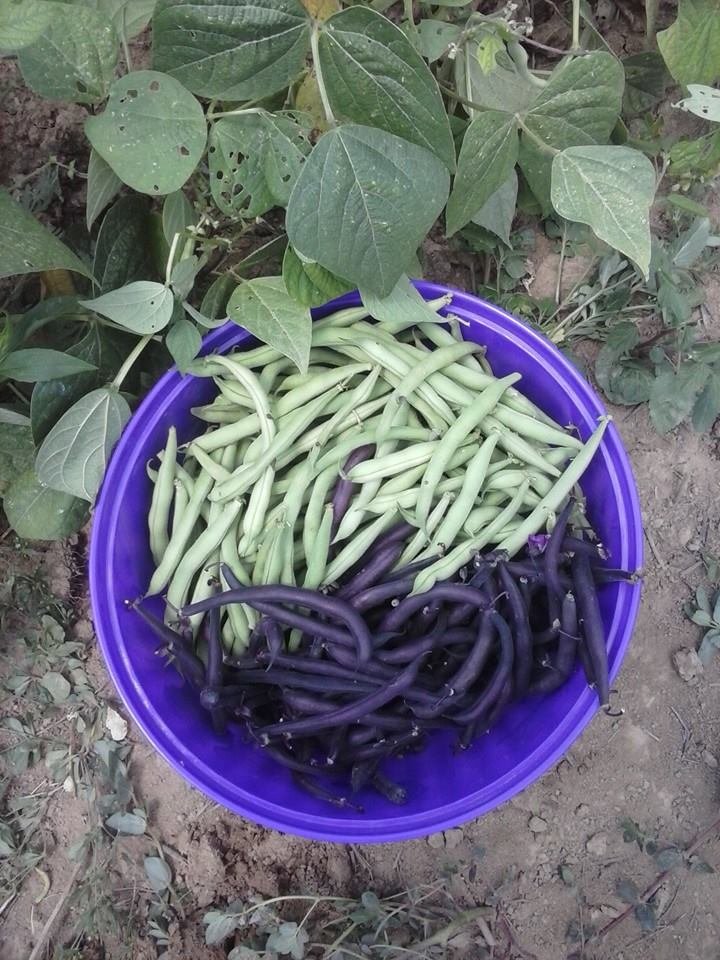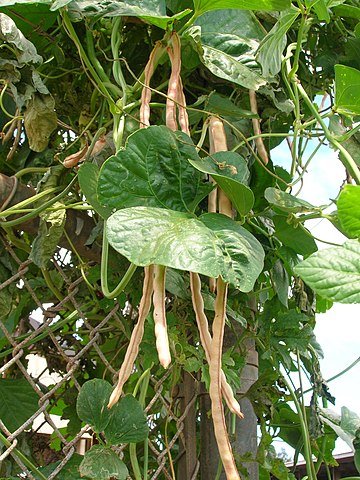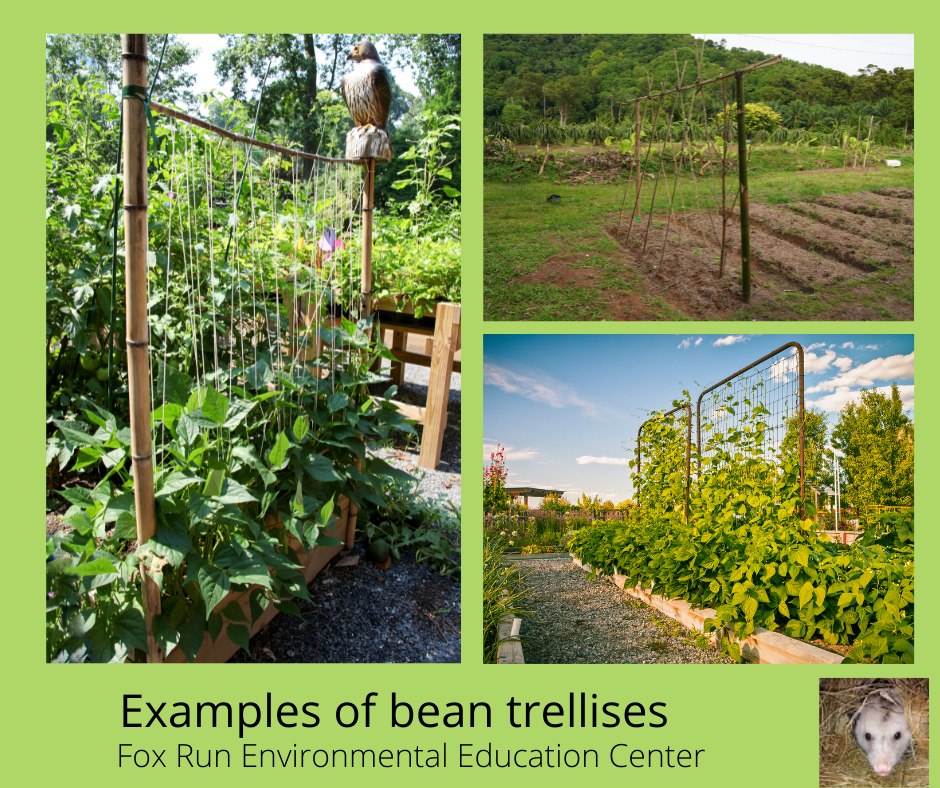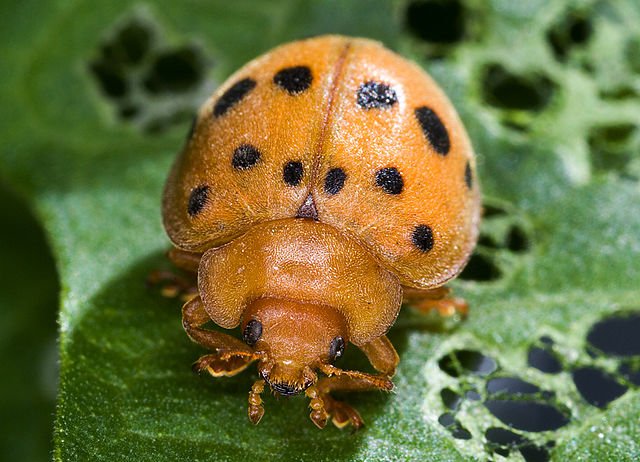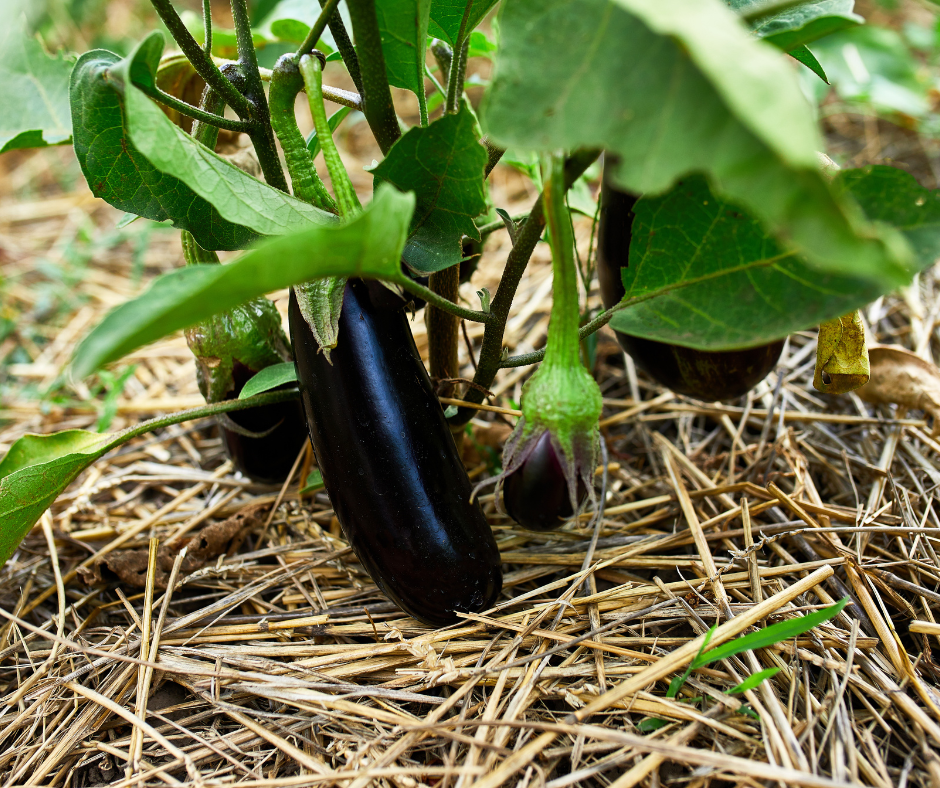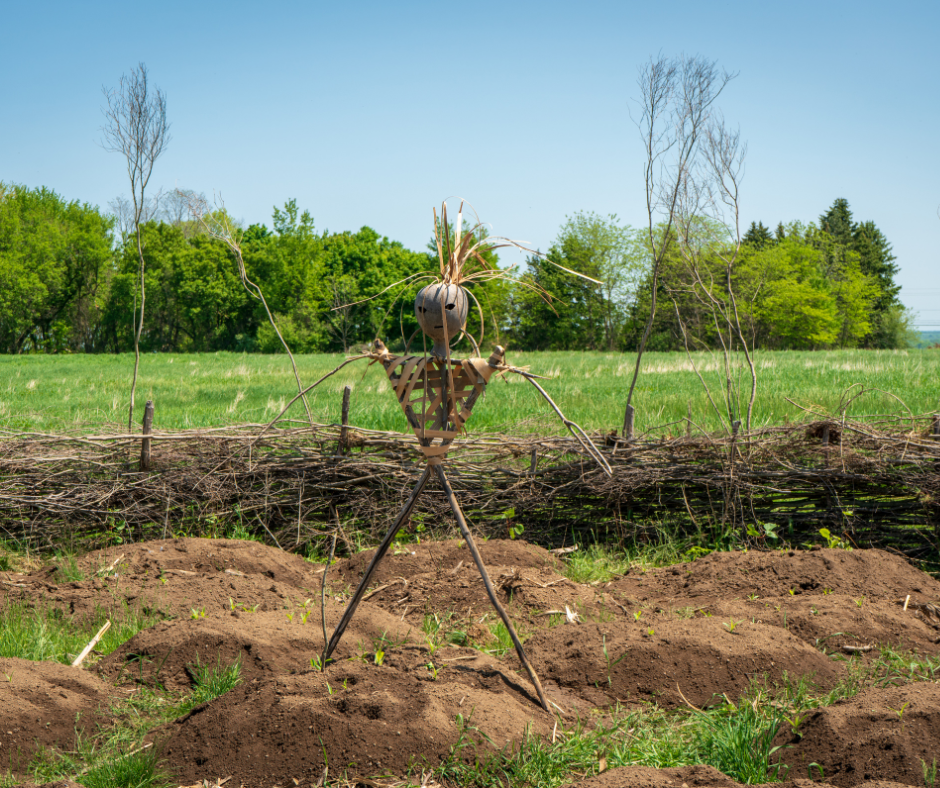Growing Green Beans in Zone 6
I love green beans - fresh off the plant, in casseroles, and canned for winter meals. I have been growing green beans in USDA Zone 6B for over 25 years and I never get tired of trying new varieties and recipes.
Green beans are easy to grow and make a great garden crop for children’s gardens. Those of us in the more humid areas of Zone 6 will need to monitor closely for molds.
This blog is a complete guide to understanding everything that you need to know about how to choose, plant, and harvest delectable green beans in Zone 6.
Types of Green Beans
First, not all green beans are green. They come in shades of purple, yellow, and red. You may also hear them referred to as snap beans or string beans.
There are two types of green beans. Bush beans and pole beans. The difference is all in how they grow.
Pole Beans
These are the common beans that have long vines and need some extra support. These beans can either be flat or round. Pole beans generally produce a higher yield per square foot than bush beans and yield a larger harvest over a longer period.
Pole beans can grow up to ten feet tall and need secure support to keep them upright. They are easier to harvest and overall more resistant to disease since their upright nature allows more airflow.
Common varieties of pole beans include Kentucky Wonder (my favorite), Kentucky Blue, and Scarlet Runner among others. When it comes to production, pole beans can produce in 55 – 65 days.
Bush beans
These beans grow about two feet tall and don’t need support. They form a small bush shape and are easy to maintain. However, picking them means bending over and crawling up and down rows.
They produce at an average of 55 days about a week before pole beans and yield an average of about 1/2 pound of beans per plant.
Bush beans produce in flushes so they are great if you want to harvest and can or take them to the Farmer’s Market.
My Favorite Varieties
There are numerous types of beans that you can grow. Some hold up better in the pressure canner and some are great raw. Experiment a little bit and
Pole Beans
Some of my best friends are pole beans! As I get older I definitely appreciate the ability to harvest standing up.
Kentucky Wonder
This is my favorite green bean (Amazon) It may be because I am a Kentucky girl. They are very dependable and have been popular since the mid-1800s. They have a fabulous traditional green bean flavor and also freeze well. 68 days till maturity.
Red Noodle Yard Long
This is such a fun one to grow especially if you have kids or sell at markets. The burgundy-colored pods are long, thin, and have a sweet flavor that tastes great in stir-fry. Needs strong support. 90 days to maturity.
Bush Beans
Yes, bush beans require a bit more bending during harvest but these varieties are my favorites and make the work worthwhile.
Royal Burgundy
This is a productive, great-tasting bean from Johnny’s Seeds and it’s a deep rich purple color that looks nice in salads. Sadly the purple color turns green when you cook them. The seeds are a bit more cold tolerant so they can be planted one to two weeks early than other varieties. 55 days till maturity.
Roma
Roma is a flat Italian-style bean. The white seeds are slow to mature and the pods are harvested in a flat shape. They have good resistance to Mosiac Viruses and are very productive.
Roma’s have a sweet almost buttery flavor that is delicious sauteed. They also hold up nicely in soups. 59 days to maturity.
Blue Lake
Blue Lake (Amazon) is a very reliable and productive bean. Great flavor and a favorite for canning and freezing. White seeds germinate best in warm soil so don’t rush to plant. I plant several crops. 58 days to maturity.
Half Runners
Half Runners are a shorter pole bean. The main difference with many other beans is that they have a fibrous string.
Before eating or cooking you need to remove the string. You do this by snapping the stem and pulling down.
It’s not hard but it is time-consuming.
Honestly, I’m a pretty harried cook and I don’t want to do that extra step! However, back in the late 80s I worked for a farm market and people would come running when I put ‘Half Runners Available’ on the sign!
Check out my latest organic gardening book -
available on Amazon.
Planting
Green beans do well in soil pH of between 6.0 – 7.0. Therefore, before growing them, you need to carry out some soil testing. Also, green beans prefer well-drained soil with normal fertility, and mostly silty loam or clay making them great for Zone 6.
Planting tip: Check the seed viability to ensure successful germination.
When and How to Plant?
Beans are typically sown directly into the soil. Monitor your soil temperature and start planting when it hits around 60 degrees. In general dark seeded varieties do better than white-seeded ones such as Roma in cool soil.
Green beans like lose well-drained soil so doing some fall prep work is a good idea.
I typically start planting my Royal Burgundy in mid-April and cover the bed with garden fabric to help warm the soil and protect from cold spring rains. I then begin planting pole beans in early May.
Check out my planting schedule for Zone 6B
Spacing and Planting Methods
Traditional Rows
For direct sowing in traditional rows maintain a spacing of 3 to 4 inches apart between the plants. For the rows, you should maintain a spacing of 2 – 3 feet apart. After planting them directly in the soil, cover with soil to ensure the seed is about 1 inch deep.
Observe proper spacing for beans to allow for good air circulation. This helps protect them from viruses.
Succession planting works well for bush beans. Plant a row every two weeks, especially if you plan on preserving.
Square Foot
If you are using the square foot gardening method plant 4 bush beans per square foot. If you are growing for fresh eating plant one square of bush beans every two weeks through mid-July (If you have space)
When using a more intensive smaller space you will remove plants and place them in compost as soon as they are finished producing.
For pole beans you will plant them along a trellis in the back of your bed. Plant seeds 3 inches apart along a linear line. So 4 seeds per square. Train them to go up the trellis.
Pots and Containers
For urban gardeners, green beans grow well in pots on a patio or balcony. The advantage of using a container or grow bag is that you can have nice lightweight soil which your beans will love. Read my article on my experiences using Grow Bags.
Make sure you have a bag or pot that is at least ten inches deep to give the roots plenty of room. Beans like grow bags and terra cotta because it allows the soil to breathe. However, if you use terra cotta remember to keep a close eye on moisture levels as they have a high evaporation rate.
For a container or grow bag that is five gallons or 10 inches wide you can plant one or two bush beans. For a ten-gallon container that is 12 inches wide plant 3 bush or pole varieties.
Trellis Pole Beans
Set up your trellis before you plant your pole bean seeds. That way you are not working around, and possibly damaging the seedlings.
I often used sections of cattle panels for trellising because when set with metal fence posts they are very sturdy. The down side is if you have an early sunny day the metal can get hot. Once the beans are tall and leafed out this is not an issue.
There are also many fun trellis ideas such as making a bean fort for children. Sturdy bamboo stakes work well. I do not recommend trellis netting as it’s often not strong enough and collapses late season.
You can purchase a sturdy bean trellis kit or cage on Amazon like this one.
Caring for Green Beans
Caring for green beans is not a huge task. When you have the right soil condition, and the beans receive enough sunlight, some of the other caring methods include:
Watering
Watering your beans is a way to maintain moist soil that is necessary for them to thrive. However, you should avoid overhead watering as this can spread disease.
Water from the bottom or use a drip irrigation system.
This will ensure that the water goes to the roots of the beans and not the leaves. It will also prevent the soil from splashing onto the leaves.
Beans are susceptible to a number of soil borne funguses and molds.
Subscribe to my YouTube channel for videos on organic gardening and wildlife conservation
Pests and diseases
There are different ways that you can implement to control pests. University of Kentucky has a very thorough article on diseases that attack green beans. To deal with pests and diseases, it is important to understand the cause so you can address them accordingly.
Some of the pests and diseases that are common in green beans include aphids, cutworms, mosaic virus, white mold, and cucumber beetles among others.
You may need to use resistant varieties, control them by spraying with recommended organic controls, avoid overhead watering, crop rotation, and mulching your bean crops among other methods as can be recommended by your extension office.
Fall clean up is an important step for every gardener because it reduces pests and diseases.
Bean Yellow Mosaic Virus (BYMV)
BYMV is common in Zone 6B especially, among commercial crops such as soybeans. BYMV is spread by aphids. Crop rotation and using corn as a barrier crop are two ways to organically control.
Mexican Bean Beetles
These are my biggest pests when it comes to beans. I use an organic insecticide Safer with Pyrethrin for beetles. You can also scrap them into a jar full of soapy water and dispose of them. Squish the small yellow eggs they lay on the undersides of leaves.
Crop Rotation
Crop Rotation is important among beans to reduce the spread of soil disease. Never plant any beans in the same location or container for three years.
Following beans with corn or other grains is advantageous since beans fix nitrogen.
Fertilizer
When it comes to applying fertilizers, you should note that beans are leguminous plants. They fix nitrogen in the soil so they do not need regular fertilizing unless they look poorly.
Nitrogen Fixation
Nitrogen fixation is a symbiotic relationship between the bean and soil-dwelling bacteria (the good bacteria that also live in your soil). This Rhizobacteria may have populations too low to maximize nitrogen fixation.
You can purchase rhizobacteria inoculation to add to your soil when you plant your beans. Another way to encourage good levels is to compost your bean plants after harvest.
Companion Planting
Green beans can do well with other crops that include spinach, potatoes, lettuces, cauliflower, cabbages, carrots, celery, and cucumber among other vegetables. They also do well with herbs and flowers.
It is also important for you to know that green beans growing with other plants would depend on whether they are bushy or with long vines. Bush beans provide shade for root crops and lettuce in the summer.
Avoid planting green beans with plants from the allium family such as onions, or garlic.
Three Sisters Garden
Beans are an intricate part of the three sister’s gardening method. This method developed by Native Americans combines corn, pole beans, and squash.
Read my article GROW A NATIVE AMERICAN THREE SISTERS GARDEN.
This is the ultimate in companion planting.
The corn provides the trellis for the beans.
The beans provide nitrogen for the corn and squash.
The squash provides a natural soil shade and mulch to conserve moisture and out complete weeds.
I will say that I have often provided some extra support for the corn and beans. Summer thunderstorms with high winds can topple the corn and bring the beans down as well. So just an extra protection layer.
Harvesting can sometimes be a bit of a challenge because the squash sprawls around and the bean and corn get entangled.
You can choose and purchase your seeds separately or get them together. Southern Exposure Seeds has a Three Sisters Garden Package that I have used and grew well.
Dry beans are grown similar to green beans except you dont pick them until they have dried.
Harvesting and Storing
When it comes to harvesting, this totally will depend on your preference. I prefer harvesting my beans when they are still young and tender for fresh eating. For canning, you can let them mature a bit more.
If you want to store them, then you need to place them directly in a plastic bag then place them in the fridge. This should keep the beans last fresh for about a week.
Medicinal Use
Green beans are rich in vitamins and fibers. This is important for improving the health of your heart since they also help to lower cholesterol levels in the body.
In addition to that, fibers are valuable when it comes to digestion. It helps in ensuring that your digestive system works smoothly.
Take Away
Green beans are a wonderful all-around garden plant. They are easy to grow and taste delicious.
Author, Ame Vanorio, is the founder of Fox Run Environmental Center and has been growing green beans for 29+ years. Check out her Author Page on Amazon.

